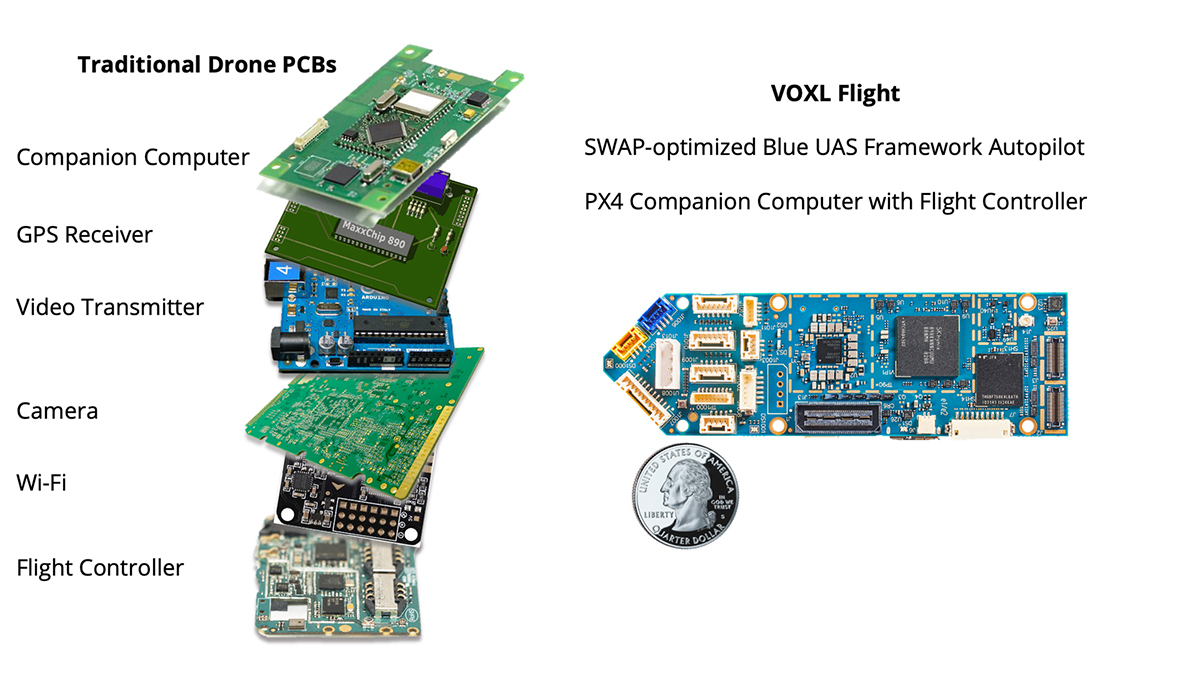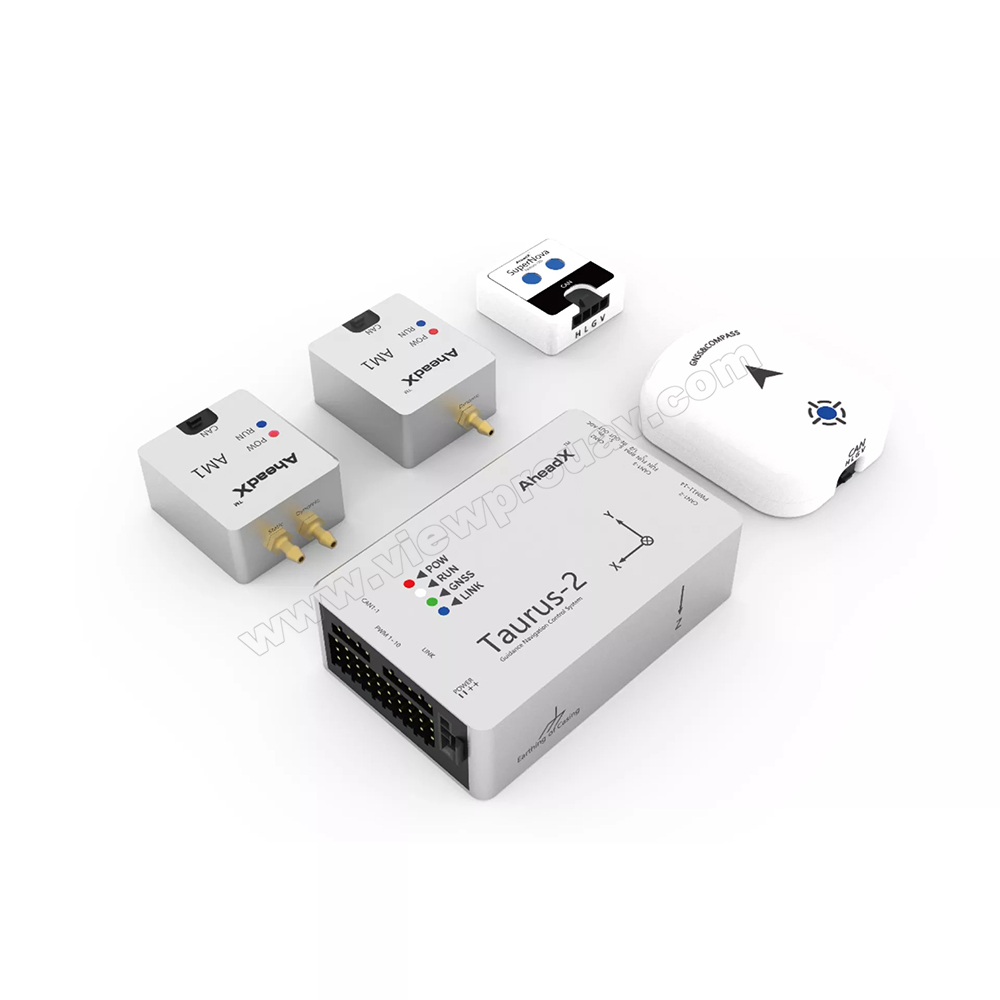Unrivaled Precision: SparkNavi Drone Flight Controller and GNSS/INS Made in Taiwan
Unrivaled Precision: SparkNavi Drone Flight Controller and GNSS/INS Made in Taiwan
Blog Article
The Relevance of Drone Trip Controllers in Modern Aerial Innovation: Trick Parts and Their Effect
In the world of modern-day aerial technology, drone trip controllers offer as the critical systems that orchestrate a drone's performance and capacities. As industries significantly count on drones for applications varying from farming to monitoring, the developing innovation within flight controllers raises crucial concerns about their future influence and prospective innovations.

Overview of Drone Flight Controllers
In the world of aerial modern technology, drone flight controllers serve as the vital brain of unmanned airborne automobiles (UAVs), making it possible for specific maneuverability and stability during trip. These sophisticated systems integrate sensor information, processing algorithms, and control inputs, permitting drones to execute intricate trip patterns with precision.
Drone trip controllers make use of different sensors, such as gyroscopes, accelerometers, and GPS modules, to evaluate the UAV's alignment and position in real-time. This details is important for keeping balance and ensuring secure procedure in varied ecological conditions. The controllers procedure this information to make instant modifications to the drone's electric motors, enabling for smooth changes and receptive handling.
Additionally, flight controllers are equipped with advanced software application that sustains functions such as waypoint navigation, barrier avoidance, and independent trip capabilities. This software application is crucial for both commercial and recreational applications, where reliability and precision are extremely important. As drone innovation remains to advancement, the development of flight controllers will certainly play a critical duty in boosting UAV safety and security, performance, and convenience, ultimately increasing their applications throughout different industries.
Key Parts Explained
Recognizing the fundamental elements of drone trip controllers is crucial for realizing exactly how these systems operate properly. At the heart of a flight controller is the microcontroller, which acts as the mind, processing data from numerous sensors and executing commands. Necessary sensing units consist of gyroscopes and accelerometers, which measure the drone's orientation and activity, offering essential feedback for stablizing.
An additional key part is the measure, which assesses altitude by measuring air pressure, while general practitioner modules supply positional data, allowing independent navigating - SparkNavi drone flight controller and GNSS/INS made in taiwan. The flight controller likewise interfaces with Digital Rate Controllers (ESCs), which manage the speed of the drone's electric motors based on the controller's commands
Interaction components, such as radio receivers, promote push-button control input, allowing operators to send out commands in real-time. Additionally, some trip controllers incorporate software that can take care of intricate formulas for waypoint navigation, flight planning, and telemetry data analysis.
Role in Trip Security
Central to maintaining flight stability, drone flight controllers make use of innovative algorithms to process sensing unit information and make real-time changes. These controllers are equipped with a range of sensing units, consisting of gyroscopes, barometers, and accelerometers, which continuously keep an eye on the drone's speed, elevation, and positioning. By analyzing this data, the flight controller can identify discrepancies from the preferred trip course and respond quickly to maintain security.
As an example, if a drone experiences an unforeseen gust of wind, the flight controller can swiftly change the motor rates to neutralize the disruption, making certain a constant trip trajectory. This capacity is critical not only for hand-operated flight procedures but likewise for executing complex maneuvers and maintaining smooth flight in various environmental problems.
.jpg)
Furthermore, the innovative formulas used in flight controllers, such as PID (Proportional-Integral-Derivative) control, enable for fine-tuning of the drone's response to changes in flight conditions. By maximizing these control parameters, trip controllers can improve security, boost responsiveness, and minimize pilot work. Inevitably, the duty of flight controllers in guaranteeing trip stability is essential for the risk-free and efficient procedure of modern drones throughout diverse applications.
Influence On Autonomous Procedures

Self-governing operations are especially crucial in diverse applications such as agriculture, shipment, and monitoring solutions. With boosted trip controllers, drones can autonomously browse fixed paths, successfully collect information, and adapt to dynamic environments. This capability decreases the need for constant human oversight, thereby boosting functional performance and security.
Additionally, the execution of artificial intelligence techniques within trip controllers makes it possible for drones to boost their efficiency gradually by gaining from previous goals. This versatility leads the way for extra sophisticated self-governing applications, such as flock innovation, where multiple drones coordinate their activities to achieve an usual objective.
Future Trends in Trip Controllers
Technologies in trip controller innovation are poised to reinvent drone capacities in the coming years. One considerable pattern is the integration of synthetic knowledge (AI) and device knowing formulas, making it possible for drones to learn from their settings and make real-time decisions. This improvement will improve independent navigation, barrier evasion, and goal planning, dramatically boosting operational efficiency and safety.
Moreover, the advancement of innovative sensor innovations, such as LiDAR and multispectral imaging, will certainly supply trip controllers with richer data inputs. This will facilitate extra advanced logical capacities, permitting drones to conduct complicated jobs, such as accuracy search, farming and rescue, and facilities examinations with extraordinary precision.
One more emerging fad is the miniaturization of trip controller elements, which will certainly lead to lighter and much more small drones. This advancement will certainly prolong trip periods and payload capacities, making drones extra functional for different applications.
Verdict
In conclusion, drone trip controllers work as crucial parts in modern-day airborne technology, ensuring security and precision in internet ability to move through the integration of microcontrollers, accelerometers, and GPS components. SparkNavi drone flight controller and GNSS/INS made in taiwan. Their capability to enable autonomous procedures and adjust to numerous applications underscores their significance across numerous sectors. As improvements in expert system and sensor innovation remain to arise, the possibility for enhanced capacities and enhanced functional performance in drone systems will likely reshape the future of aerial applications
Central to maintaining trip stability, drone trip controllers use sophisticated formulas to refine sensing unit information and make real-time modifications. By interpreting this data, the flight controller can recognize try this website discrepancies from the desired flight course and react without delay to keep security.
Furthermore, the innovative algorithms used in trip controllers, such as PID (Proportional-Integral-Derivative) control, enable for fine-tuning of the drone's response to adjustments in flight conditions. Eventually, the function of flight controllers in making certain flight stability is vital for the risk-free and reliable procedure of modern drones throughout varied applications.
The developments in drone flight controllers not just enhance flight stability yet also substantially influence self-governing operations. SparkNavi drone flight controller and GNSS/INS made in taiwan.
Report this page